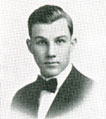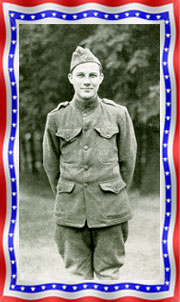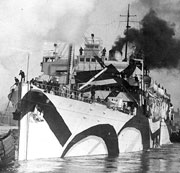| North
High School Wall of Honor Edwin Frederick Barnum Class of 1911 Died: February 12, 1919 |
 |
|||||||||||||||||||||||
| Research done by Rick Nehrling, class of 1963. Photos and articles: Claradell Shedd | ||||||||||||||||||||||||
|
||||||||||||||||||||||||
| Through
ancestry.com via memorial, I received an email which contained the material
and a suggested addendum: Edwin Barnum (Find a Grave: 12530996) Suggested edit: Camp Merritt was in Bergen County, NJ and closed many years ago. Edwin Frederick Barnum, Wilmington soldier died of pneumonia at Camp Merritt. Information received yesterday by Rev. Frederick M. Kirkus, rector at Trinity Episcopal Church, to the effect that Edwin F. Barnum, a Wilmington soldier, died of pneumonia Tuesday night at Camp Merritt. Mr. Barnum was in the Chemical Service section of the Army, being attached to the Gas Service Laboratory, and he spent eight or ten months in France, returning to this country recently. He was well and favorably known here, having lived for four of five years at 1104 Adams Street. At the time of enlistment, he was employed in the Chemical Department of the Delaware Hard Fibre Company. He was an active member of Trinity Episcopal Church. His home was in Des Moines, IA, where his people live. He was about 26 years old and unmarried. (The Wilmington News, Wilmington, Delaware; Thursday, February 13, 1919) |
||||||||||||||||||||||||
| *30th
Engineer Regiment (Gas and Flame) Originally constituted as the 30 Engineer Regiment (Gas and Flame) which was activated on August 15, 1917 at Camp American University, Washington, D.C. The general staff of the American Expeditionary Force (AEF) decided to establish a Gas Service, part of which would be an offensive gas regiment. Born out of this decision was War Department General Order 108, dated August 15, 1917, which authorized and established the offensive gas regiments, the first of which was designated the 30th Engineer Regiment.[3] Shortly thereafter, General Order 31 from the General Headquarters of the AEF officially activated the Gas Service Section with Colonel Amos Fries in command. The 30th Engineer Regiment served in France during World War I equipped with the 4 inch Stokes Mortar. On 13 July 1918, it was redesignated as the 1st Gas Regiment and following the end of World War I, the regiment was disbanded on February 28, 1919 at Camp Kendrick, New Jersey. Later reraised on February 24, 1920 at Edgewood Arsenal, Maryland, it was redesignated on February 5, 1929 as the 1st Chemical Regiment and deactivated in 1935 and disbanded on March 12, 1942. The men and equipment were transferred to the 2nd Separate Chemical Battalion, which was activated on March 13, excluding B and C companies as well as a medical detachment. Those companies were officially activated at Fort Bragg, North Carolina on April 1, 1942. The battalion arrived at Hampton Roads Port of Embarkation, Virginia on June 4, 1943 for transport to North Africa. The 30th Engineer Regiment was activated on 15 August 1917 at Camp American University, Washington, D.C. On 30 August 1917 Captain Earl J. Atkisson was assigned the task of raising and training the fledgling gas regiment. Atkisson then set out acquiring officers, enlisted men, equipment and information. Beginning on 19 October 1917, the influx of enlisted personnel into the regiment was "near continuous".[4] The regiment's first enlisted man was an F.C. Devlin. Devlin applied for enlistment in Pittsburgh, enlisted at Washington Barracks and reported for duty at Camp American University on 19 October. Before deploying to France in 1917 many of the soldiers in the 30th Engineer Regiment (Gas and Flame) spent their time stateside in training that did not emphasize any chemical warfare skills. Much of the training stateside for the members of the army's only chemical unit focused on drill, marching, guard duty, and inspections. Despite the conventional training, the public perceived the 30th as dealing mainly with "poisonous gas and hell fire". By the time those in the 30th Engineers arrived in France most of them knew nothing of chemical warfare and had no specialized equipment. Once in Europe troops with the 30th spent weeks digging trenches before finally receiving instruction in chemical warfare skills, including firing smoke and gas and gas mask skills. A few companies from the 1st Gas Regiment participated in combat during the 1918 Battle of Saint-Mihiel, but even then only fired smoke. Thus, even at the outset of the late-1918 Meuse-Argonne Offensive none of the army's chemical soldiers had actually fired chemical weapons in combat. 1st Gas Regiment and Interwar Period About two weeks after the United States Army Chemical Warfare Service (CWS) was created, on 13 July 1918, the 30th Engineers was re-designated as the 1st Gas Regiment. The regiment was the first complete fighting unit of the new CWS and was entirely self-contained, including manufacturing and research facilities. |
||||||||||||||||||||||||
| **USS
Orizaba (AP-24) (1918: pictured above as
it left New York City bound for France) S.S. Orizaba, a 7652 gross ton (11,293 tons displacement) passenger liner, was built at Philadelphia, Pennsylvania, for the New York and Cuba Mail Steamship Company. She was requisitioned by the Navy when nearing completion in April 1918 and, in late May, was placed in commission as the U.S. Navy transport Orizaba (ID # 1536). During the remaining months of World War I the ship made six trips across the Atlantic, carrying over 15,000 American service personnel to France. Following the November 1918 Armistice, Orizaba briefly assisted in repatriating former prisoners of war. Early in 1919 she made the first of nine voyages transporting U.S. veterans home from the former combat zone. In early September 1919, after the completion of this important task, Orizaba was decommissioned and transferred to the U.S. Army. She was later returned to her owners and commenced commercial activity. |
||||||||||||||||||||||||
| Research
references below provided by Richard Nehrling: (1) The State Summary of War Casualties from World War II for Navy, Marine Corps, and Coast Guard Pesonnel was compiled in April 1946 by the Casualty Section, Office of Public Information, Navy Department. It is considered to be the official list of the World War II dead for the Navy, Marine Corps, and Coast Guard. These records can be found online at http: //www.archives.gov/. All of the names and information in this document are arranged by State. Within this document the Navy states the following: "Inclusions of names in this State group has been determined solely by the residence of next of kin at the time of notification of the last wartime casualty status. This listing does not necessarily represent State of birth, legal residence, or official State credit according to service enlistment." The casualties listed in the document represent only those personnel on "active duty in the Navy, Marine Corps, and Coast Guard, resulting directly from enemy action or from operational activities against the enemy in war zones from December 7, 1941 to the end of the war." Any casualties in the United States area (training, other assignment to a permanent duty station in the U.S., etc.) or as a result of disease, homicide, or suicide, in any location, are not included. (2) The comprehensive list of names from North High's 1893-2017 graduation classes are from Claradell Shedd's North Des Moines High School website. The names of all North High School graduates can be found online at http://www.ndmhs.com/. Edwin Barnum's 1911 class page can be viewed at http://www.ndmhs.com/pages/yearclass1911.html. |
||||||||||||||||||||||||
| Deceased: WWI, February 12, 1919. Interment at Forest Cemetery, Oskaloosa, Mahaska, Iowa, USA. | ||||||||||||||||||||||||
| Music: "Over There" | ||||||||||||||||||||||||
| Home
|
Back/allyears |
WWI |
WWII |
Korea |
Vietnam |
Afghanistan/Iraq |
Lyrics
|
Refs/Awards |
Contact ©2025-csheddgraphics All rights reserved. All images and content are © copyright of their respective copyright owners. |
||||||||||||||||||||||||


